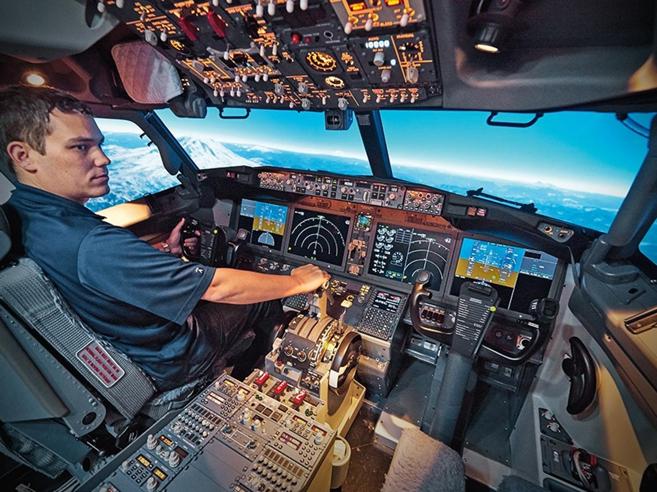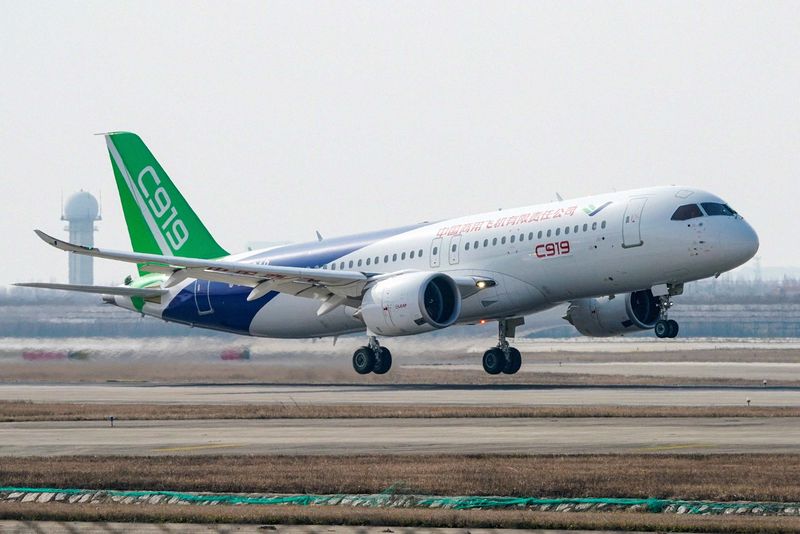BOEING TROUBLES IN CHINA

By: Bruce Einhorn & Dong Lyu
Photo: Corriere della Sera/Bloomberg
Airlines worried about buying from Boeing Co. have another supplier besides Airbus SE to choose from: the Chinese government. The state-owned Commercial Aircraft Corp. of China, or Comac, is building the C919, a narrowbody passenger plane with a capacity of about 170 that the company says has more than 800 orders worldwide. It will compete with the Boeing 737 Max 8—as well as the Airbus 320neo—as part of Chinese President Xi Jinping’s ambitious gamble to build an aerospace industry from scratch and break Western companies’ grip on the skies.
China grounded the Max 8 within hours of the Ethiopian Airlines crash, leading a global wave of suspensions. “These kinds of events provide an opportunity for Comac to get their foot in the door,” says Chad Ohlandt, a senior engineer at Rand Corp. in Washington. “If they’re smart, they’re going knocking on doors of whatever 10 airlines are considering buying narrowbody aircraft.”
The company, which started test flights of the C919 in 2017, has received 815 orders from 28 customers, including GE Capital Aviation Services. Comac didn’t respond to requests for comment.
No. of planes to be delivered to Chinese airlines over the next two decades: 9,000
Beijing’s aspirations extend beyond the C919. Comac is working with Moscow-based United Aircraft Corp. to develop the widebody CR929that could eventually fly long-haul routes such as Beijing to New York. State-owned enterprises are developing a complete range of aircraft, including widebodies, turboprops, business jets, helicopters, seaplanes, and even zeppelins. “Strategically speaking, aviation manufacturing is a national imperative,” says Yu Zhanfu, a partner at Roland Berger Strategy Consultants in Beijing who focuses on aerospace and defense. “Once you have aviation manufacturing reaching economies of scale, it will lift the entire industrial chain.” Comac said in November that China’s aviation market will take delivery of 9,000 planes, worth $1.3 trillion, over the next two decades. Two-thirds of those will be single-aisle planes like the Boeing 737 and the C919.

Shanghai-based Comac is building a training center for maintenance engineers, flight attendants, and other airline employees who will fly the C919 and CR929. “They are doing four, five, or six things in parallel,” Marc Szepan, a lecturer in international business at Oxford’s Said Business School, says of China’s master plan. “They’re firing on all cylinders.”
That puts Boeing in the potentially awkward position of competing against one of its partners. Comac and Boeing are co-owners of an assembly center south of Shanghai that opened in December by delivering a 737 Max 8 to Air China. Another Comac plane, the ARJ21 regional jet, competes with aircraft made by Embraer SA, which is also forming a joint venture with Boeing. The buyers so far are smaller carriers, including Chengdu Airlines and Genghis Khan Airlines. “Comac is a great competitor and we respect them a lot,” Boeing said in an email. “They are also a great collaborator.” China accounted for about 14 percent of Boeing’s revenue last year, according to data compiled by Bloomberg.
But it’s not all clear skies for Xi. Chinese planes don’t have the safety track record that Western ones do. More important, no Chinese company has the capacity to design and produce engines for commercial jets, says Yong Teng, a partner with L.E.K. Consulting in Shanghai. The C919’s engines are by CFM International, a joint venture of General Electric Co. and France’s Safran SA.
That technology is at the heart of charges the U.S. Department of Justice brought against two Chinese nationals in October. It said they were intelligence officers who allegedly tried to hack the computer systems of companies to obtain information related to commercial aircraft engines. The U.S. has also unsealed charges against an alleged Chinese agent and accused him of conspiring to steal trade secrets from U.S. aviation and aerospace companies. The Chinese government dismissed the charges. Says Nicholas Eftimiades, a lecturer in the School of Public Affairs at Pennsylvania State University in Harrisburg: “Aerospace technology is the No. 1 target for China espionage”.




